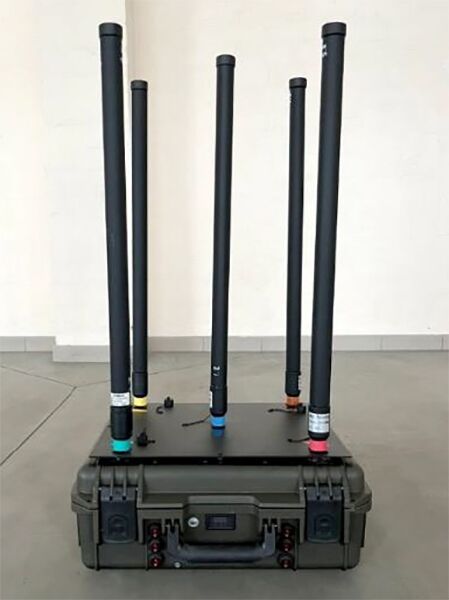
The Parasol-1 short-range counter-UAV electronic warfare system, made by Ukrainian company Mixsteel, was in use by Ukrainian forces as of June 2024. (Mixsteel)
NATO's former senior military representative has warned that the alliance must quickly learn lessons from the front line in Ukraine to ensure it can achieve operational advantage in an increasingly contested electromagnetic environment (EME).
Speaking at the Association of Old Crows (AOC) Europe 2024 conference in Oslo on 14 May, Air Chief Marshal Stuart Peach (retd), former chairman of the Military Committee of NATO, said that after decades of disinvestment in electronic warfare (EW), NATO now had to step up a gear and be prepared to counter a grinding Russian EW onslaught. “We're now seeing [in Ukraine] the most dense and dangerous electromagnetic operating environment we've ever seen,” he said. “Russia never stopped doing EW, it never stopped continuing to invest. We need to learn from the Ukrainians who are fighting for their lives and their country.”
While much attention has been paid to the massed ranks of Russian military hardware – tanks, helicopters, aircraft, artillery, rockets, and guided weapons – ranged against Ukraine's long front line, the battle being fought in the electromagnetic spectrum has often been overlooked. Yet the fact is that the conflict is witnessing a highly dynamic ‘war in the ether' unprecedented in its intensity.
In one sense, it has echoes of previous EW campaigns in the way that the protagonists have vied with each other – through the reactive application of measure, countermeasure, and counter-countermeasure – to exploit, deny, and control the spectrum. What is very different, however, is the technological pace at which this battle has been fought.
Looking to read the full article?
Gain unlimited access to Janes news and more...







